|
How often do you hear someone make an observation that something is broken in the world around us? It’s easy to share your opinions about fragmented systems with your friends under the guise of, “Just wanting to see a better future.” What separates the naysayers and bystanders from the doers is rather simple, it includes rolling up your sleeves, getting into the mess that you see and becoming a part of the solution. I recently came across a beautiful quote, “Volunteering is the ultimate exercise in democracy. You vote in elections once 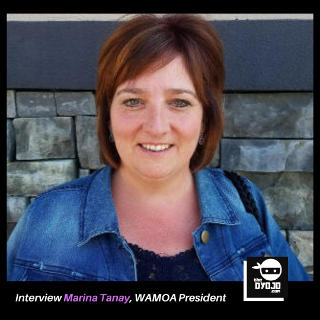 Whether you believe in the same cause, when you meet a volunteer, you are faced with someone who is invested in being a part of the change that they want to see. Change is not easy. It takes years to get into a mess and it typically takes much longer to get out of it. When we connect with others, to collaborate towards the results we want to see, we have a much better shot at conquering the obstacles of improvement. I enjoy hearing the stories of everyday people who are working to develop themselves and are intentional about making a change in the world around them. Marina Tanay currently serves as the Capital Projects and Facilities Manager for the Sumner-Bonney Lake School District. Marina was recently voted in as the President of the Washington Association of Maintenance and Operations Administrators (WAMOA). WAMOA is a professional networking and education association for those working in the realm of facilities and operations in educational settings. We had the opportunity to meet and to interact for this interview. The DYOJO: You have been with Sumner School District for 11 years, correct? Marina Tanay: I actually started with the Sumner School District over 19 years ago. DYOJO: Did you plan to be working in facilities/capital improvement when you started your career? Marina: When I first started, I just wanted to work around my kids' school schedules and have a job that I didn't have to take home with me. My background as a paralegal and a writer made me seek out more and more responsibility as my kids got older. After subbing in M&O, I found my niche. DYOJO: Did you start in part time work? What position was your first? Marina: I did start part time in the child nutrition world with the district as a cashier. It worked for me as I had just recently been diagnosed with cancer and I wanted to have a job that I didn't have to put so much of myself into while I dealt with that. I had previously been writing and doing advertising for a small local newspaper. DYOJO: Wow, cancer. What led to this discovery? Marina: I had a very rare cancer called chondrosarcoma in my right hand. I had a lump in my hand that I questioned being a tumor, but the doctor thought it was a cyst. It grew for about 3 to 4 years in my hand before I insisted on follow up. At that time, my options for treatment were limited. The cancer wasn't one that would respond to chemotherapy and radiation wasn't an option with my hand. So amputation was my only real option. DYOJO: How old were your children when you were given this news? Marina: My kids were both in elementary school when I was diagnosed in 2000. My kids were troupers. I worked with school counselors to make sure they had support on the school side and my husband and I were open and honest with them throughout. DYOJO: Scary stuff. Glad that you and the family made it through. Marina: Getting through it was mostly an emotional battle. It wasn't always easy, but I got through it. DYOJO: You are originally from this area, what has kept you here? Marina: I am a native Washingtonian and have lived all over this state. My husband recently retired from Boeing and it was his employment at Boeing in Auburn that helped keep us in this particular area. DYOJO: Federal, state, county, city and district budgets are always an area of concern for local communities and their schools. What are some of the unique challenges you face working on facilities and capital improvement within the public sector? Marina: Such a true statement! It is challenging on both the general fund and capital budget sides. For the general fund, with McCleary, we've had to go through a couple rounds of budget cuts that have been a challenge for the entire district. It's hard to lose good co-workers to layoffs. From the capital perspective, the hot Northwest construction market has not helped school districts. I miss the days in 2009, 10 and 11, when our projects were routinely bidding below estimate! DYOJO: What have been some of the most rewarding projects you have worked on? Marina: I have been very fortunate to work on projects from two bond initiatives. I'm most proud of the elementary schools we have opened in Tehaleh as I worked closely on the FF&E for both projects:
DYOJO: You are the incoming president for WAMOA, how did you first hear about the organization and when did you become a member? Marina: WAMOA is the Washington Association of Maintenance & Operations Administrators. I remember becoming acquainted with WAMOA in the early 2000s by reading the journals. I began attending region meetings about 7 or 8 years ago. 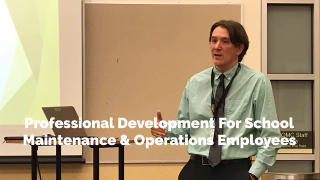 DYOJO: These WAMOA journals in the early 2000s, are those similar to the quarterly publication that WAMOA currently sends out? Marina: Yes, I inherited a binder of early WAMOA journals that I really treasure. DYOJO: For those who are not familiar tells us a bit about WAMOA and why you believe it is of value to those working in education? Marina: WAMOA's core mission is reflected in our new vision statement: Developing successful facility leaders through professional collaboration. Managing school facilities is unique in the industry and our organization is an invaluable resource for its members. As a team, we work to provide up-to-date, useful information to support our members' success in their work and to develop as leaders in our field and our districts. DYOJO: What sparked your interest in being involved in the leadership for WAMOA? What have you learned about working to serve your members as well as combine your voices to position your association to initiate positive change within the larger context? Marina: At the heart of it is my desire to serve. I value my peers and am proud to serve them as they trust me to do so. Whether it has been as a region representative, vice president, or now president, I am dedicated to serving the organization and its members as best I can. As an organization, we are great collaborators and I value the organizations that we are developing collaborative relationships with to broaden our discussions and create positive impact. DYOJO: As the president of a not for profit organization, what is your vision for your term? Marina: Our 2020 conference theme really reflects my vision, "Leading by action and example" which is a concept that I believe in. The best quote I've seen that sums it up says that "Leadership is not a position or title. It is action and example." I believe that. DYOJO: What do you believe are some of the keys to implementing your vision and seeing it executed to the best of your ability? Marina: My goals for this year are to develop a vision statement, which we just recently accomplished with input from members and the board in a collaborative fashion. Next we will conduct a SWOT analysis and use the information generated to develop a new strategic plan so that we can carry out our mission, as reflected in our vision statement. Key to this work is communication and trust. I believe we have good communication in our organization and that the necessary trust relationship is developing as well. 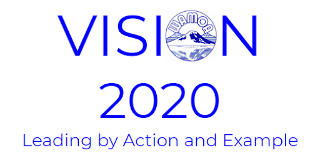 DYOJO: We have discussed what it looks like to promote leadership development for and amongst your peers, what are some of the keys to doing this when your group is spread out? Marina: WAMOA has it down! Our regions focus on local issues and provide good content at our regional monthly meetings. We invest in and work hard to provide the best keynote and leadership seminar speakers that we can find. Our conference committee works hard to put together a strong slate of workshops at our annual conference to meet the needs of all our members. The balance between the regional meetings and the leadership seminar and conference seems to really work for us. DYOJO: For your own personal/professional development what have been some books, events and other resources that encouraged you in 2019, what did you draw from them? Marina: 2019 was a HUGE year for me. I accomplished a lifelong dream and obtained my Bachelor of Science degree in Business Management finally. The course content was so relevant in both my professional and WAMOA life. DYOJO: Congrats on completing your Bachelor’s, I know how good that feels as I recently completed mine as well. What are a few professional development components that you are looking forward to in 2020? Marina: I've also been so motivated and inspired by some of our past leadership speakers. Brad Worthley, Phil Van Hooser and others inspire me constantly with their newsletters and blog posts that I continue to follow. I'm looking forward to hearing Denise Ryan in March. And it might be time for me to start pursuing my project management certification. That may be a new challenge that I set for myself! I discovered WAMOA when we moved to Washington, as I had previously been involved with a similar group in Oregon called OSFMA (Oregon School Facilities Management Association). WAMOA does a great job of providing monthly regional meetings for local networking. There is a Spring Leadership Seminar in beautiful Leavenworth and a Fall Conference in the Valley of Hops, Yakima. If you work in education, facilities, operations, custodial, managing union labor or provide services that would be of value to these professionals, WAMOA will be of value to your development goals in 2020 and beyond.
0 Comments
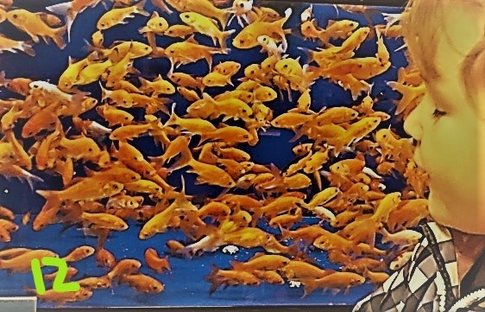 Prepare. Prevent. Prevail. Protecting your non profit organization. Prepare. Prevent. Prevail. Protecting your non profit organization. Non profit organizations have as much to lose when business is interrupted as for profit businesses do and in many cases more to lose. Maintaining business continuity involves having the right knowledge base to understand risks and prepare your team to prevent those items that can be avoided as well as prevail in the event that something negative occurs that impacts the operational flow. A non profit can face losing membership, clientele and support, which can include grant dollars, funding sources, leased space, momentum and core team members in the event that business as usual is no longer feasible due to a disaster event such as water or fire damages. While no entity can be prepared for everything, even in a non profit or mission based organization it is important to spend some administrative time to think through the potential risk exposure for your organization (read more on risk assessment and creative solutions HERE). A non profit may not have profits at stake which would be a critical concern for a traditional business, because of the nature of the work at the organization there may be even more at risk in these types of operations. Business continuity includes mission momentum, funding, community progress and team cohesion. People and organizations often don't have spare time so disaster preparation becomes an item that can be put off, unfortunately until an event happens that forces the parties involved to retroactively wish that they have made it a priority. Prevention is another agenda item that seems too time intensive to be of value in expending limited resources. Often many disasters could have been prevented by simple exploration of basic functions, risk assessments and changes to process improvements. An organization should leverage their resources to assist them in protecting their operational continuity, as noted in a prior article and presentation for property owners (see HERE on insurance claims education), make your insurance agent work for their money in reviewing your policy and assisting with risk management. If you have resources in your leadership, executive boards and even your volunteer base, include time for input as well as assistance in protecting your organization. The time and resources spent on education, risk assessment and prevention may not show up on the balance sheet, but when you consider what your organization does on a day to day basis for the benefit of the community, business continuity for your operation means more than just saving dollars. Consider what is at stake if your mission were to lose momentum, especially due to something that may have been preventable, and budget in time to invest in preparation and prevention so that you can continue to prevail. If you would like to discuss further how we can assist, we would love to help boost the knowledge of your team so that we can collaborate in prevention - and should the worst occur, we are here to assist with response. We have had the great privilege of helping churches, non profit organizations, educational facilities and mission based entities protect and restore their businesses following water, fire and other related disasters. 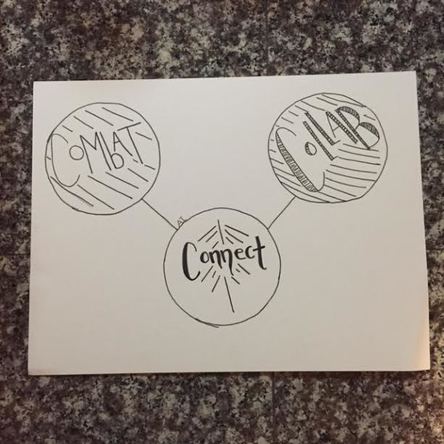 Connect. Collaborate. Combat. Connect. Collaborate. Combat. How can we connect and collaborate to combat the trajectory of our communal nutritional defects? In America we have a paradox of seemingly polar health issues where our population suffers simultaneously from obesity as well as food insecurity. According to the USDA the statistics used to note that one in six Americans suffer from hunger but in 2006 the wording was changed from hunger to a more scientifically explanatory term of food insecurity (Schulzke, 2012). While food assistance, often understood as food stamps or SNAP, is available the link between access to food is not always a clear connection towards elevating health in our communities through the distribution of these resources. Whether it confounds logic or not, those who are at highest risk for food insecurity – the poor or under privileged, can simultaneously be at high risk for obesity. What we want to explore is what are the potential causes for this dichotomy, for which we would ask readers to hold your assumptions for just a few moments, as well as what our communities may do to generate a better overall health for our neighbors as a healthy Lane County is of benefit to our social, communal and economic well-being. Making an impact in this arena of food insecurity which impacts children, generations and our society as a whole may be simpler than we think. Think connect, collaborate and combat. If you took a survey of why people think that others are obese, what would the bulk of the answers be? Poor eating choices and habits would likely top the list of most informal surveys, regardless of whether there is research that supports this public perception. What about this headline, “Soft Drinks No. 1 Purchase by Food Stamp Recipients,” where CNS News relayed a report by the Food and Nutrition Service showing that over $350 million dollars were spent on soft drinks as a grocery selection that far surpassed any other food commodity (Jeffrey, 2016). The headline is catchy and would be a confirmation bias for anyone who would want to prove that those on government assistance are perpetually making poor choices with regards to health, as though to say it was their own fault and/or they reap what they sow. Yet, in this same article the study notes that purchasing patterns were similar between households receiving Supplemental Nutritional Assistance Program (SNAP) funds and those that were not, so much so that, “The top two commodities were the same for SNAP and non-SNAP households.” The veil between those on assistance and those who are not receiving help from the government isn’t that thick, we share many of the same bad habits when it comes to our purchasing patterns, our meal planning and our utilization of healthy food resources. The first step to effective connection, collaboration and combat of this issue is to understand that we are connected whether we like it or not. Households utilizing SNAP benefits, synonymous with food stamps, on average are taking in the same amount of calories as non-SNAP households, yet many of those homes receiving assistance are eating less nutritious (even if in some cases only marginally so). Individuals and families who do not receive government assistance for food don’t score remarkably higher than those on food stamps, as according to University of Connecticut researcher and author Tatiana Andreyeva, “The average American scored 58 out of 100 – a failing grade – on the Healthy Eating Index (Godoy, 2015).” Our habits are more similar between socio-economic classes than we may want to admit. For many individuals and families, vegetables often are consumed in the form of delicious pizza toppings and the preferential preparation of starches is through deep frying. In the same study for the Healthy Eating Index the average food stamp recipient did score lower than non-SNAP individuals, but marginally so as their scores were 47-51 out of 100, a 7-9% variance between groups. If there is a common thread of low health scores between citizens who receive food assistance as well as those who do not receive these benefits, how can our communities work to elevate our overall knowledge and commitment to health? We understand that we are connected whether we like it or not, so to build upon that connection we need to recognize that everyone could benefit from understanding how to identify healthy options as well as how to prepare them in a way that is appealing. Regardless of your economic status, if you were handed a beautiful eggplant would you know what it was as well as how to prepare it? For most people if a recipe has eggplant in the title or the ingredients list it would be an automatic swipe left to reject that meal. The fear of the unknown can be powerful, especially when it comes to food. There is a gap in the general knowledge base for how to meal plan as it relates to working within the budget you have available for groceries, whether this budget is supplemented by assistance programs or not. Meal planning can save time and money as well as contribute to health while reducing waste. It is estimated that as much as 25% of the food purchased in America is thrown away (Garrett, 2014). Think of how much effort goes into a family making it to the grocery store - making some kind of list, getting the kids in the vehicle, traveling to the store, making it through the store with all members of the family intact and in the same condition they arrived in, waiting in line, getting all the items and people back into the vehicle, returning home and putting everything away – only to throw away a quarter of the products that were procured during that expedition. Wasted time, money and resource, all of which we have an ever reducing supply of. Meal planning can help you plan your calories to achieve your nutrition goals, trim needless waste and save you money/resources that could be more effectively spent for personal or family financial goals. We know we are connected, we know we need to expand our food education and as we build upon that we need to strengthen our connection with resources that assist us to function within our means. There are resources available online to assist with planning as well as people or organizations within your community that can provide assistance for resource allocation as it relates to meeting your nutrition, health and financial goals, connect. 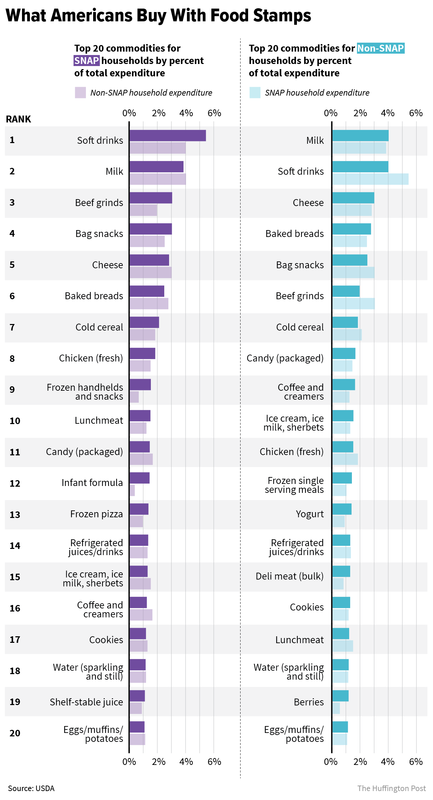 As noted by mother of six and San Diego based food planner, Jessica Fisher of goodcheapeats.com, she suggests starting with the meals that your family usually likes, map those out on a calendar and then experiment with recipes you find to add those into your rotation (Garrett, 2014). Tools don’t have to be sophisticated but writing out a mean plan on the calendar can be the first step towards putting and efficient grocery shopping list together. Now we face our second nutritional void – knowing how to cook something tasty with that beautiful eggplant we received in the preceding paragraph. How do we prepare it, what seasonings do we use, what do we pair it with and how long do we cook it for? On the comparison lists of top 20 commodity items purchased by households that receive SNAP assistance as well as those that don’t, fresh vegetables do not make the list for either group (see Figure 1, Delaney & Scheller, 2016), again showing that this issue with lack of food knowledge thins the veil that separates the classes. Statistics like these demonstrate that we as American’s on the whole are underperforming in our planning, preparation and execution of healthy eating. A community that wants to make changes that will impact local health across barriers, sharing knowledge for meal planning as well as tips for meal preparation can make deep impacts to the benefit of all ages, groups and classes on through to the broader application in making for a healthier America. The food resources are there, the knowledge for planning, the skills for preparation and the ability to package this all together is an effort that will benefit all of us as humans for years to come – or we can continue on the trajectory we are on as a nation. We know we are connected, we know we need education, we know we need to live in our means and now we add these pieces of connection and build that into collaboration. If the SNAP program is creating programs such as the Double Up Food Bucks program which rewards those on assistance for making healthy choices with their food stamps (Godoy, 2015), how can we help teach those recipients to utilize these resources? If we have resources such as food banks, community gardens and food share programs that are energized by grass roots commitment to the idea that we can all connect and collaborate to solve those issues that we can control. Obesity and food scarcity are issues that we can solve, the resources area there. Arguably global hunger is a solvable issues as it is not a matter of resource shortage, according to Joshua Muldavin, a geography professor at Sarah Lawrence College who focuses on global food and agricultural instruction, “We have two or three times the amount of food right now that is needed to feed the number of people in the world (Koba, 2013).” If we go back to the 25% waste for items purchased and could change that through better meal planning by creating grocery lists that fit within our health goals, grocery lists that meet our budgetary realities and combining that with the expanded skills that provide us with the ability to cook food that is nutritional as well as tasty, we could make big changes at the local level. Change ripples as individuals become groups who affect communities who create a movement that affects a region and on to the nation and then beyond. Through connection we can collaborate and with both those elements in motion we can begin to combat the issues of obesity as well as food insecurity, the question is not whether we can do but whether we will do it. Reference:
Schulzke, Eric. “A food stamp paradox: Starving isn’t the issue – it’s access to nutritious foods.” Desert News. April 28, 2012, http://www.deseretnews.com/article/765572050/A-food-stamp-paradox-Starving-isnt-the-issue-2-its-access-to-nutritious-foods.html Jeffrey, Terence. “Soft drinks No. 1 purchase by food stamp recipients; $357,700,000 from 1 grocery chain.” CNS News. November 22, 2016, http://www.cnsnews.com/news/article/terence-p-jeffrey/357700000-1-grocery-chain-soft-drinks-no-1-purchase-food-stamp Godoy, Maria. “How America’s wealth gap shows up on our dinner plates.” NPR. September 15, 2015, http://www.npr.org/sections/thesalt/2015/09/18/441143723/people-on-food-stamps-eat-less-nutritious-food-than-everyone-else Delaney, Arthur & Scheller, Alissa. “Here’s what people buy with food stamps.” Huffington Post. November 21, 2016, http://www.huffingtonpost.com/entry/food-stamps-diet_us_582f4bd7e4b058ce7aaadea0 Koba, Mark. “A hungry world: Lots of food, in too few places.” CNBC. July 22, 2013, http://www.cnbc.com/id/100893540 |
AuthorThoughts on personal and professional development. Jon Isaacson, The Intentional Restorer, is a contractor, author, and host of The DYOJO Podcast. The goal of The DYOJO is to help growth-minded restoration professionals shorten their DANG learning curve for personal and professional development. You can watch The DYOJO Podcast on YouTube on Thursdays or listen on your favorite podcast platform.
Archives
March 2023
Categories
All
<script type="text/javascript" src="//downloads.mailchimp.com/js/signup-forms/popup/unique-methods/embed.js" data-dojo-config="usePlainJson: true, isDebug: false"></script><script type="text/javascript">window.dojoRequire(["mojo/signup-forms/Loader"], function(L) { L.start({"baseUrl":"mc.us5.list-manage.com","uuid":"b9016446bd3c6a9f0bd835d4e","lid":"83282ffb9e","uniqueMethods":true}) })</script>
|
Jon Isaacson |
Connect. Collaborate. Conquer.
© COPYRIGHT 2015. ALL RIGHTS RESERVED.
|



 RSS Feed
RSS Feed